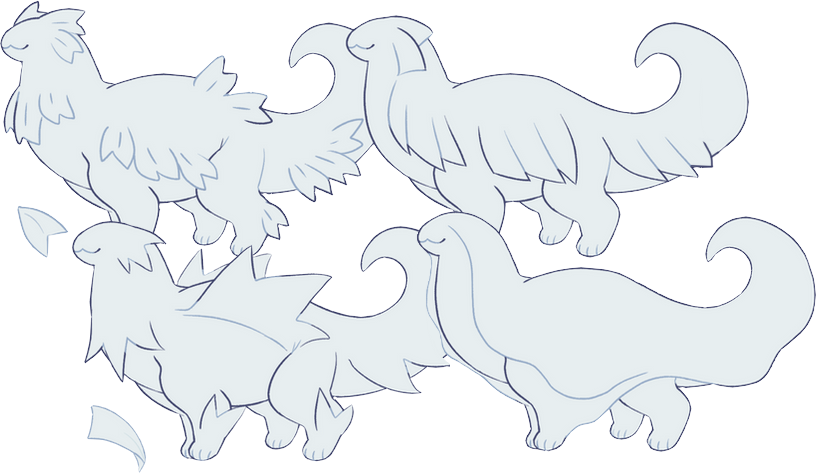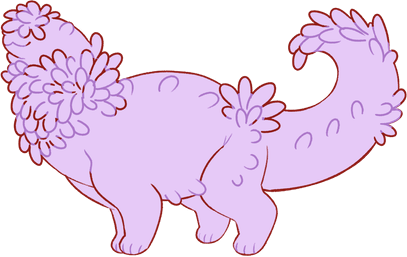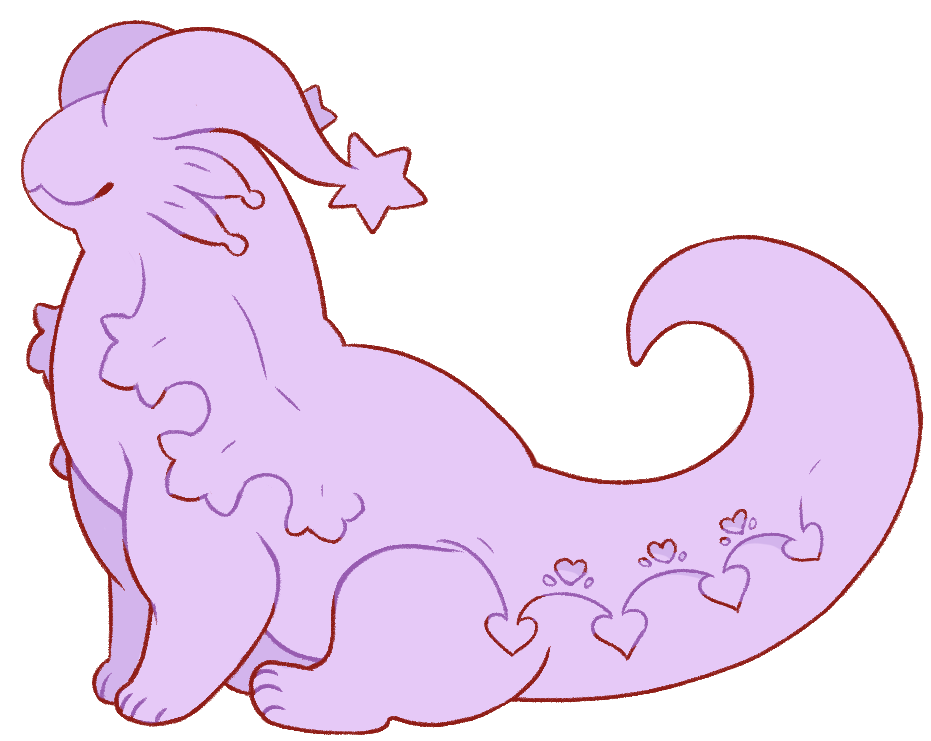Traits
Bump Feelers (Normal)
Small, fleshy, nublike feelers that are used to detect vibration.
Their shape varies, but they tend to be thinner at the base and tip, fattening around the middle. It's not unheard of for these feelers to be completely spherical!
Note: They should remain similar in size to the illustration. Bunches of feelers cannot occur from one point in groups of more than three.
Deviations of these (i.e extremely large, wide, or more than three bunched feelers) will require the clustered feelers upgrade.
Tentacle feelers (Normal)
Long tapering feelers that are highly flexible.
Tentacle feelers can grow numerously in a flat array, appearing as a mantle.
The tentacles can have suckers along their undersides; those without suckers are used to detect movement in deep water.
Note: They should be visibly smaller and thinner than a basic tail. Bunches of feelers cannot occur from one point in groups of more than three.
Deviations of these (i.e extremely long, thick, or bunched feelers) will require the clustered feelers upgrade.
Drape feelers (Normal)
Flat extrusions of sensitive skin.
These are highly standard in leeches and are often bred along with colors and patterns in various mimicry attempts, including stylized approximations of fur or feathers. They're less sensitive than their other feeler counterparts, but detect humidity easily and often act as a stabilizer when a leech is in the water.
Note: They should remain similar in size and shape to the illustrations. Bunches of feelers cannot occur from one point in groups of more than three.
Deviations of these (i.e a long line of segmented or pleated feelers, more than two or three points, or more than three bunched feelers) will require the clustered feelers upgrade.
Take care to shape these individually so they do not get confused with fur or feather body; they should not have a thicker center rib or veins like a leaf.
Clustered feelers (Common Myth)
A feeler mutation in which feelers keep multiplying, vastly overgrowing the natural maximum of three in one spot.
These mutated feelers can often grow into each other and fuse, creating mutated feelers that are larger than the illustrated size.
Note: Only one upgrade is needed to apply this trait to the entire leech's body. This applies to both clustered numbers and oversize drapes; you do not need two upgrades to have both.
Ruffle Drapes (Potion)
[Item: Bunched Silk]
Drape feelers that are so thin they ripple like fabric. More extreme drapes may take the form of pleats, ruffs, and can even flare out around the paws, giving the appearance of sleeves.
These drapes are luxurious to look at, but incredibly easy to tear and may be indicative of overall fragile skin. Owners should take extreme care to keep their leech from roughhousing, or else they may sustain significant injuries.
Note: Ruffle drapes have the same limitations as normal feelers do, and maintain the same size restrictions as drape feelers.
Bunches of feelers cannot occur from one point in groups of more than three.
Deviations of these (i.e a long line of segmented or pleated feelers, more than two or three points, or more than three bunched feelers) will require the clustered feelers upgrade.
Decorative Feelers (Common Myth)
An odd mutation that has caused simple flat shapes to grow from the tips of otherwise normal feelers. Some drapes may also be seen sporting decorative perforations, resembling very basic lace!
Note: This is an additive trait that still requires regular feelers.
Unusual feeler shapes that alter the entire shape of the feeler will not be allowed. Visually the shapes should still look connected, i.e no line separating the feeler from the shape.





